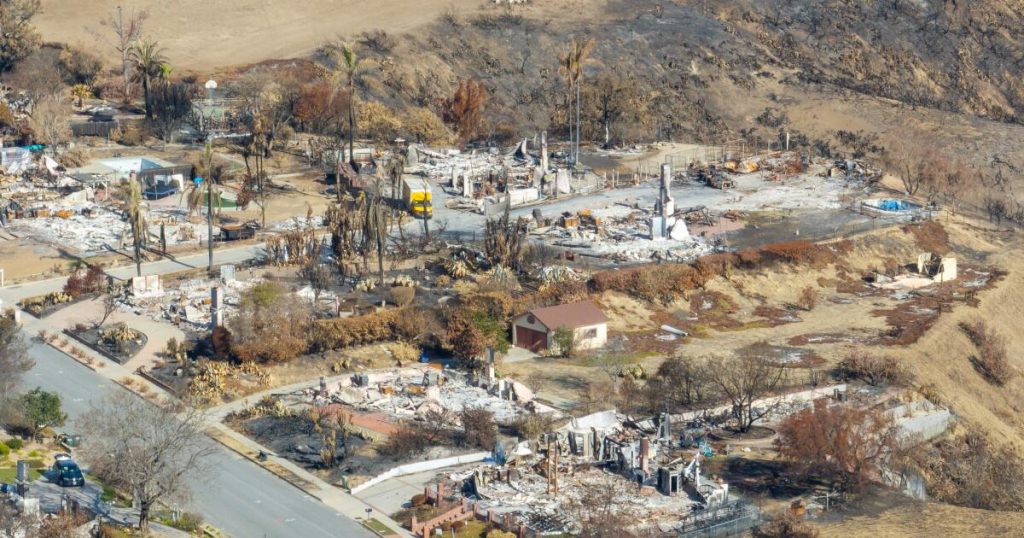
Southern California is expected to be hit by “life-threatening and destructive” storms Tuesday into Wednesday, causing power outages and increasing the threat of fast-moving fires.
The National Weather Service warns that offshore winds of up to 160 mph are possible in parts of Los Angeles and Ventura counties.
Winds are expected to peak between 10 p.m. Tuesday and 10 a.m. Wednesday, Los Angeles County Fire Department officials said.
Fire officials are warning residents living in wildfire-prone areas to take precautions, including calling 911 if there is smoke or signs of fire, preparing for power outages and having emergency evacuation plans. are.
How to prepare for power outages
Check your emergency kit. You should have an emergency kit ready for potential power outages and other disasters. Pack essentials such as non-perishable food, drinking water, flashlight batteries, a fire extinguisher, cash, a first aid kit, and a hand-crank weather radio (see a complete list of useful items here). Pack gloves, goggles, duct tape, and plastic sheeting in case a tree branch falls and breaks your window. Also, keep a mini-kit by your bedside in case you wake up during a nighttime power outage and need to wander around in the dark. Bring hard-soled shoes, a flashlight, and extra glasses or contacts if you wear them.
Plan for your family. All plans look different. If you have small children, be sure to have several days worth of milk, diapers, and other essentials. If you have pets, double check your kibble stash. Anyone taking medication should have a few days’ worth of medication on hand. If your family uses mobility devices, think of ways to get them out of the building without using the elevator. If someone is using a plug-in medical device, make sure it is fully charged and that you have a battery-powered backup option on hand. Write down the appropriate phone numbers for family members, doctors, and insurance companies in case your smartphone malfunctions and you can’t access your contact list. Decide where you will go if you need to evacuate.
Charge your device, fill up your tank, and check your battery. Make sure all phones, tablets, e-readers, and laptops are fully charged. If you have an extra battery pack, consider charging it. Fill up your gas tank or charge your EV’s battery. Check the batteries in your flashlights, smoke detectors, and carbon monoxide detectors and find spare parts if needed.
Stay up-to-date on alerts and warnings by signing up for your local emergency notification system. Los Angeles County residents can sign up for Alert LA County, Notify LA, and Nixle to receive notifications by text message or email. Stay up to date on weather forecasts by listening to local news stations or checking the National Weather Service Los Angeles office website.
Prepare meals and activities that don’t require electricity. Rummage through your pantry and come up with some ideas for meals and snacks that don’t require opening the fridge or freezer or using electricity to cook. If you have irreplaceable items like breast milk in your freezer, consider filling your freezer with ice packs and water bottles if you’re at risk of a power outage. The more capacity your freezer has, the longer your food will stay frozen.
What to do in case of power outage
Please stay home. It’s safer inside your home than out on the road, where street lights may be out and debris may be flying around. Unless you are ordered to evacuate or need to go elsewhere for health reasons, do your best to stay where you are.
Avoid opening the refrigerator or freezer. According to the U.S. Department of Health and Human Services, an airtight refrigerator can safely store food for up to four hours even when the power is off. Never sample food to determine safety after a power outage. Each item will be evaluated individually. The agency has a downloadable chart to help you decide which food to throw away.
Do not light candles. Flashlights and other battery-powered light sources are much safer. Candles are a fire hazard.
Remove anything that is not connected to the surge protector. You don’t want your appliances to be damaged when power is restored. Turn off all lights except one. That way you know your power has been restored without risking a surge.
Save your phone or laptop battery for emergencies. Sure, it’s tempting to kill a few hours scrolling through social media without power, but it’s better to save that battery power for checking for emergency updates.
Times staff writer Grace Twohey contributed to this report.
Source link




